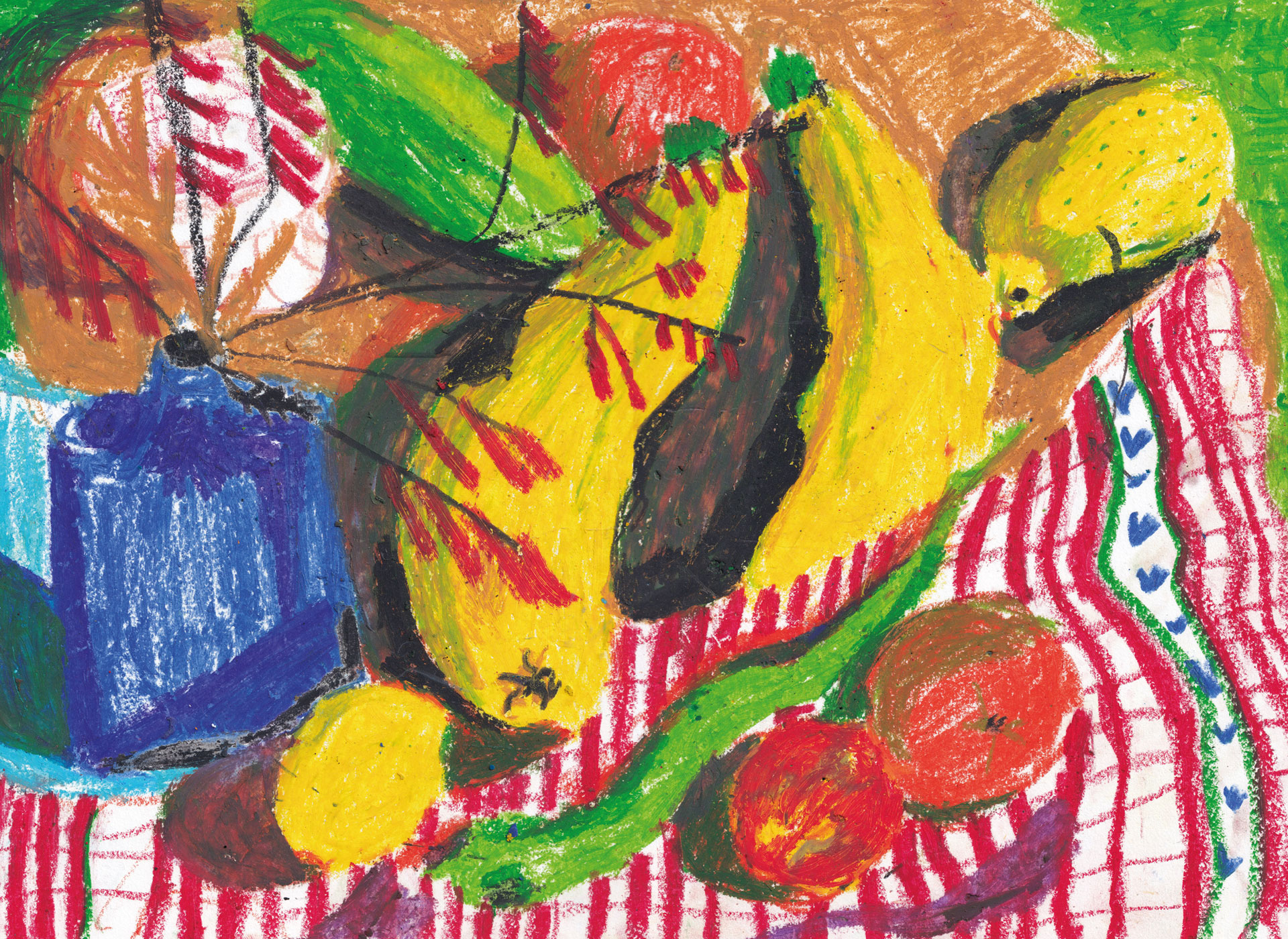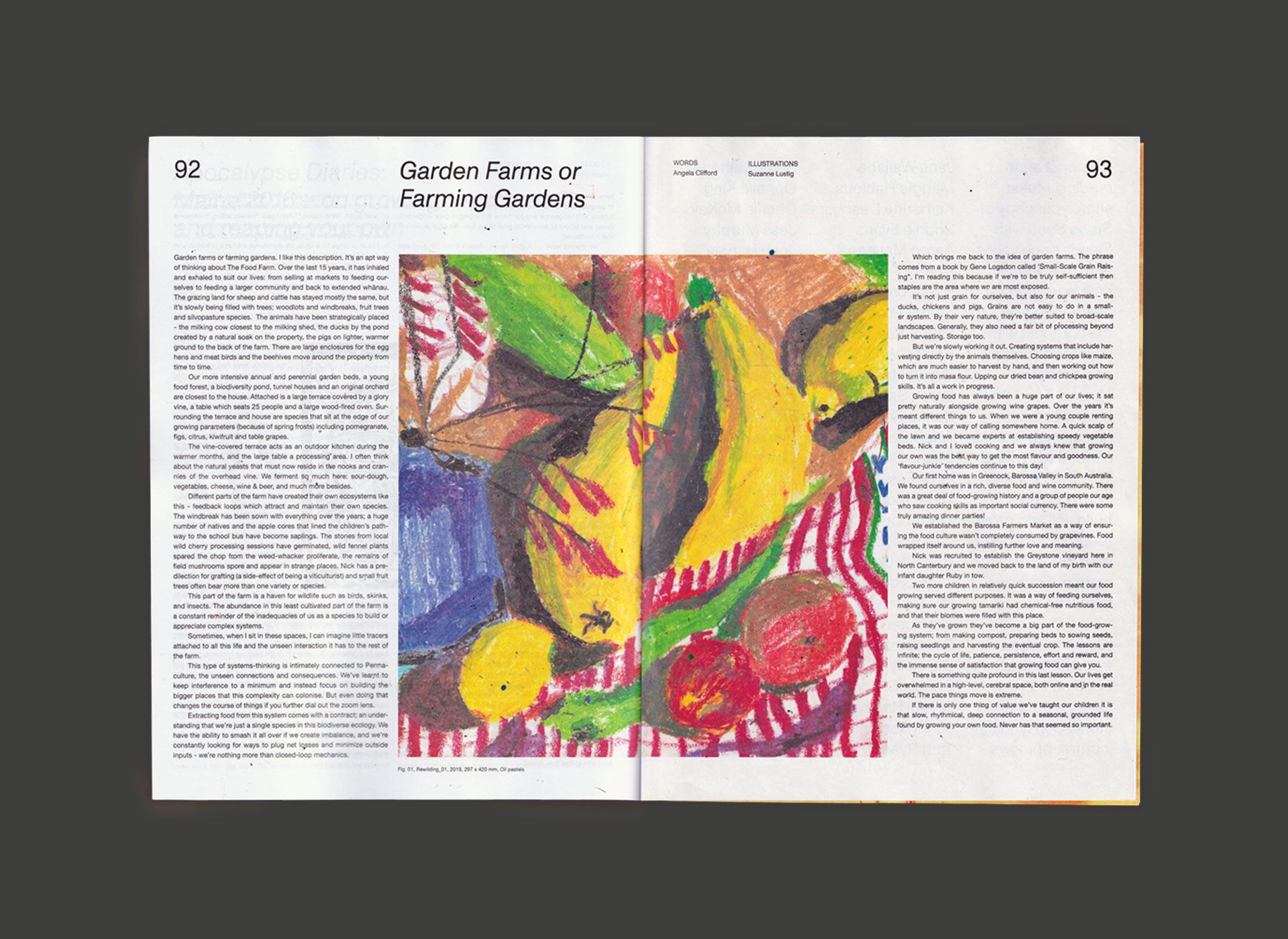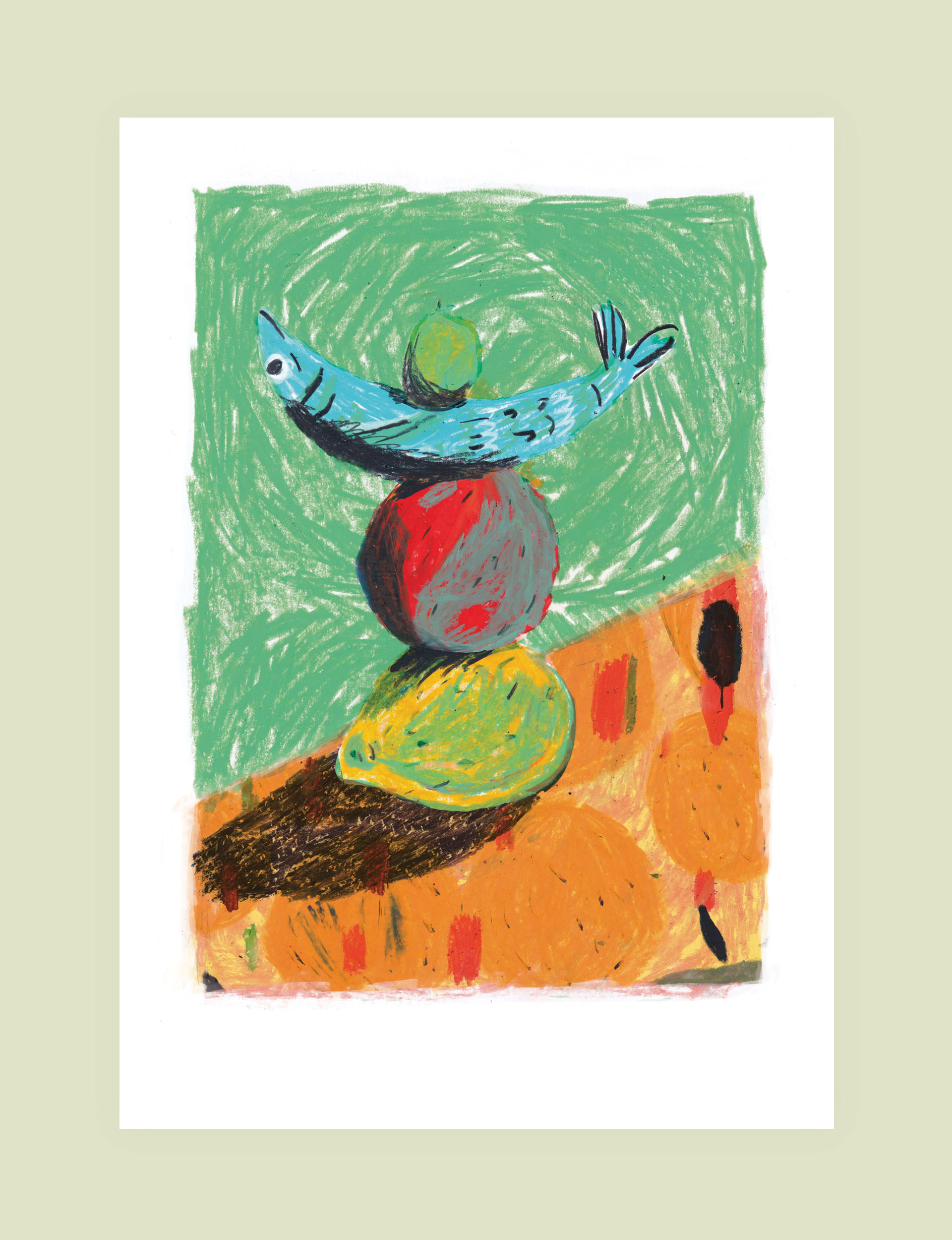
Stone Soup magazine
Illustration for Stone Soup Syndicate vol.10. Next to Angela Clifford's words about 'garden farms or farming gardens'.
Stone soup is one of my favourite reads in New Zealand. A melting pot of food, culture and creativity.
Visit Stone soup to read this article or read below
Garden farms of farming gardens
Garden farms or farming gardens. I like this description. It’s an apt way of thinking about The Food Farm. Over the last 15 years, it has inhaled and exhaled to suit our lives: from selling at markets to feeding ourselves to feeding a larger community and back to extended whānau. The grazing land for sheep and cattle has stayed mostly the same, but it’s slowly being filled with trees; woodlots and windbreaks, fruit trees and silvopasture species. The animals have been strategically placed – the milking cow closest to the milking shed, the ducks by the pond created by a natural soak on the property, the pigs on lighter, warmer ground to the back of the farm. There are large enclosures for the egg hens and meat birds and the beehives move around the property from time to time.
Our more intensive annual and perennial garden beds, a young food forest, a biodiversity pond, tunnel houses and an original orchard are closest to the house. Attached is a large terrace covered by a glory vine, a table which seats 25 people and a large wood-fired oven. Surrounding the terrace and house are species that sit at the edge of our growing parameters (because of spring frosts) including pomegranate, figs, citrus, kiwifruit and table grapes.
The vine-covered terrace acts as an outdoor kitchen during the warmer months, and the large table a processing area. I often think about the natural yeasts that must now reside in the nooks and crannies of the overhead vine. We ferment so much here: sour-dough, vegetables, cheese, wine & beer, and much more besides.
Different parts of the farm have created their own ecosystems like this – feedback loops which attract and maintain their own species. The windbreak has been sown with everything over the years; a huge number of natives and the apple cores that lined the children’s pathway to the school bus have become saplings. The stones from local wild cherry processing sessions have germinated, wild fennel plants spared the chop from the weed-whacker proliferate, the remains of field mushrooms spore and appear in strange places. Nick has a predilection for grafting (a side-effect of being a viticulturist) and small fruit trees often bear more than one variety or species.
This part of the farm is a haven for wildlife such as birds, skinks, and insects. The abundance in this least cultivated part of the farm is a constant reminder of the inadequacies of us as a species to build or appreciate complex systems.
Sometimes, when I sit in these spaces, I can imagine little tracers attached to all this life and the unseen interaction it has to the rest of the farm.
This type of systems-thinking is intimately connected to Permaculture, the unseen connections and consequences. We’ve learnt to keep interference to a minimum and instead focus on building the bigger places that this complexity can colonise. But even doing that changes the course of things if you further dial out the zoom lens.
Extracting food from this system comes with a contract; an understanding that we’re just a single species in this biodiverse ecology. We have the ability to smash it all over if we create imbalance, and we’re constantly looking for ways to plug net losses and minimize outside inputs – we’re nothing more than closed-loop mechanics.
Which brings me back to the idea of garden farms. The phrase comes from a book by Gene Logsdon called ‘Small-Scale Grain Raising”. I’m reading this because if we’re to be truly self-sufficient then staples are the area where we are most exposed.
It’s not just grain for ourselves, but also for our animals – the ducks, chickens and pigs. Grains are not easy to do in a smaller system. By their very nature, they’re better suited to broad-scale landscapes. Generally, they also need a fair bit of processing beyond just harvesting. Storage too.
But we’re slowly working it out. Creating systems that include harvesting directly by the animals themselves. Choosing crops like maize, which are much easier to harvest by hand, and then working out how to turn it into masa flour. Upping our dried bean and chickpea growing skills. It’s all a work in progress.
Growing food has always been a huge part of our lives; it sat pretty naturally alongside growing wine grapes. Over the years it’s meant different things to us. When we were a young couple renting places, it was our way of calling somewhere home. A quick scalp of the lawn and we became experts at establishing speedy vegetable beds. Nick and I loved cooking and we always knew that growing our own was the best way to get the most flavour and goodness. Our ‘flavour-junkie’ tendencies continue to this day!
Our first home was in Greenock, Barossa Valley in South Australia. We found ourselves in a rich, diverse food and wine community. There was a great deal of food-growing history and a group of people our age who saw cooking skills as important social currency. There were some truly amazing dinner parties!
We established the Barossa Farmers Market as a way of ensuring the food culture wasn’t completely consumed by grapevines. Food wrapped itself around us, instilling further love and meaning.
Nick was recruited to establish the Greystone vineyard here in North Canterbury and we moved back to the land of my birth with our infant daughter Ruby in tow.
Two more children in relatively quick succession meant our food growing served different purposes. It was a way of feeding ourselves, making sure our growing tamariki had chemical-free nutritious food, and that their biomes were filled with this place.
As they’ve grown they’ve become a big part of the food-growing system; from making compost, preparing beds to sowing seeds, raising seedlings and harvesting the eventual crop. The lessons are infinite; the cycle of life, patience, persistence, effort and reward, and the immense sense of satisfaction that growing food can give you.
There is something quite profound in this last lesson. Our lives get overwhelmed in a high-level, cerebral space, both online and in the real world. The pace things move is extreme.
If there is only one thing of value we’ve taught our children it is that slow, rhythmical, deep connection to a seasonal, grounded life found by growing your own food.
Never has that seemed so important.

